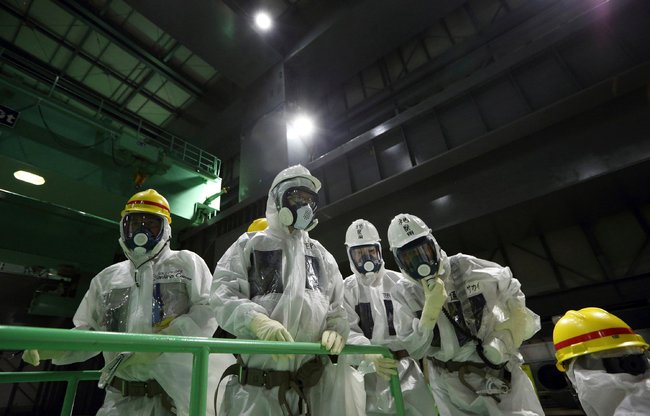
Members of the media inside the Fukushima Daiichi plant on Thursday. The plant’s operator plans to start moving radioactive fuel to safer storage. Pool photo by Tomohiro Ohsumi
nytimes.com - by Hiroko Tabuchi - November 10, 2013
TOKYO — It was the part of the Fukushima Daiichi nuclear power plant that spooked American officials the most, as the complex spiraled out of control two and a half years ago: the spent fuel pool at Reactor No. 4, with more than 1,500 radioactive fuel assemblies left exposed when a hydrogen explosion blew the roof off the building.
In the next 10 days, the plant’s operator, the Tokyo Electric Power Company, is set to start the delicate and risky task of using a crane to remove the fuel assemblies from the pool, a critical step in a long decommissioning process that has already had serious setbacks.
Just 36 men will carry out the tense operation to move the fuel to safer storage; they will work in groups of six in two-hour shifts throughout the day for months.
(READ COMPLETE ARTICLE)
Recent Comments